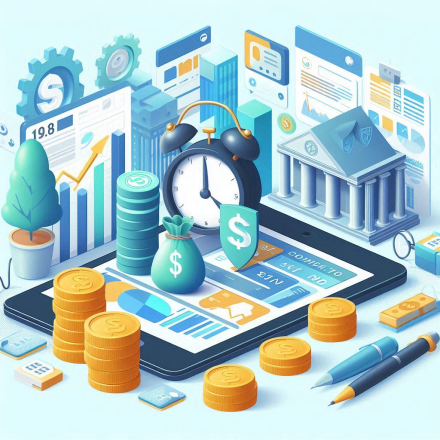Financial inclusion now days, has emerged on the global front as one of the key goals. Over one billion people around the world are "unbanked". They do not have access to even the most basic banking services which include savings and credit facilities and life insurance. The circumstance cuts across both the individual and the economy in that people are prevented from being able to keep track of finances, save, or build wealth.
Financial inclusion is a strategy that aims to ensure everyone, especially the unbanked, gains access to affordable and secure financial services. With the advancement of technology, hopes for eventually opening up financial markets toward underprivileged populations are high, mainly because of new solutions that will make banking accessible.
Why Financial Inclusion Matters?
For most people who are unbanked, financial service less status always spells missed opportunities for personal and economic growth. According to the Global Findex Database by the World Bank, nearly 1.4 billion adults worldwide are unbanked, mostly in developing countries. Financial exclusion also perpetuates poverty since people with no bank access often rely on risky informal financial practices, such as cash savings or informal lenders.

Major Obstacles in Financial Inclusion
- Physical Inaccessibility: There are hardly banks, especially in most rural areas. People may have to travel for hours and hours to find a bank. In most cases, it is such unavailability that bars the people from opening accounts or taking up financial services.
- Lack of Financial Knowledge: Most unbanked people do not know more about financial services. The lack of knowledge implores them even not to consult the formal bank services.
- Documentation/Identification: Most of them do not possess identity documents, which are significant necessities to obtain a bank account. According to Findex, nearly 20% of the adults who are not banked reported that they lacked documents as a reason for not holding a bank account.
- High Costs of Banking Services: Traditional banking services are pricey. If one hails from a low-income family, the services will cost too dear. The concept of maintenance charges, minimum balance requirements, and various other charges in bank accounts discourages most people from opening a bank account.
These present significant financial inclusion challenges in search of innovative yet cost-effective solutions.
The Role of Technology in Expanding Financial Access
The advent of digital technology, mainly mobile telephony, has revolutionized financial services. Some ways tech-driven solutions are bringing banking to the unbanked include the following:
- Mobile Banking Solutions: Mobile banking: This, arguably, is the most crucial innovation in terms of financial inclusion so far. Mobile phones provide a means of accessing the service even in underserved markets with hardly any physical banking infrastructure. According to GSMA, indeed, more than 310 million mobile money accounts existed globally in 2022, and the number keeps rising.
Facilities to send and receive money, and even to save, are offered by mobile money services such as Kenya's M-Pesa. Individuals can conduct all bank-related activities using a phone and a mobile wallet, without having a physical bank account. Mobile money transactions in Kenya were equivalent to approximately 40% of that country's GDP in the year 2021. That is again a testament to the manner in which mobile banking has transformed economies.
- Digital Payment Systems: This means that cashless payments enable unbanked people to perform electronic transactions without necessarily having their earnings in a bank account. These cashless modes of payment include QR code payment, contactless cards, and mobile wallets that limit the use of cash, which can be dangerous and inconvenient. Digital payments also help one save more easily and find out how one spends money.
For example, Brazil's Pix digital payment system allows for near-instant transfers of money and is helping drive financial inclusion. More than 130 million Brazilians have registered with the system since it launched in 2020-many of whom have never had a bank account.
- Blockchain and Cryptocurrencies: In simple terms, blockchain technology, being the base for cryptocurrencies, provides a decentralized and transparent system for financial transaction and exchange. Blockchain provides a way of secure transfer of money across borders without necessarily requiring the use of a traditional bank for the transfers. This feature is very lucrative in places that have big inflows in terms of remittances, such as the Philippines and Nigeria.
Cryptocurrencies are highly volatile and may not yet be ideal for everyday transactions. The more stable digital currency alternative is gaining traction with the emergence of stable coins, pegged to traditional currencies such as the US dollar. Remittances to low- and middle-income countries reached $626 billion in 2023 and became notably faster and less expensive through digital channels.
- Digital ID and Biometric Solutions: Missing identification documents appear to be one of the greatest barriers to financial inclusion. Digital ID and biometric solutions help to solve the very problem of the ability of people to verify safely their identity. For example, in India, such biometric systems have been introduced as the 12-digit ID with data related to fingerprints and iris. With Aadhaar, over 1.3 billion Indians can now open a bank account and receive direct transfers of benefits by the government into those very accounts.

Future of Financial Inclusion
Technology has wide-ranging contributions toward filling the financial gap for unbanked populations. Here is how in the future the world will advance when digital solutions continue to evolve:
- AI and Machine Learning: AI can analyze user data in order to establish creditworthiness for those having no credit scores. The loan of minute amount is given to persons who have no history of banking in the past. To take an instance, the microloans are given by digital lenders such as Tala and Branch, which uses AI.
- Open Banking: For example, with open banking, third-party developers will develop applications and services around a financial institution's data. Open banking opens it up to better means of providing financial services to the unbanked by creating services tailored to the needs of users. On the aspect of Europe and the UK, open banking has increased to become a trend in making financial services more accessible, probably as a model meant for use globally.
- Collaboration Between Governments and Private: The collaboration between public authorities and private institutions enables financial inclusion. In doing so, they are able to provide affordable access to banking.

Measuring the Effects of Financial Inclusion
For monitoring purposes, measuring financial inclusion is crucial by using countable indices. The Global Findex Database maintains information on account ownership, digital payments, savings, and borrowing. That is a global picture of financial inclusion. Other indices that may be added include:
- Account Ownership Rate: The percentage of adults having a bank account is shown through account ownership rate. As of 2021, data shows the account ownership rate for low- and middle-income countries has increased to 63%.
- Mobile Money Accounts: The total number of mobile-device-based accounts opened will also be a manifestation of digital financial inclusion.
- Digital Transaction Volumes: Observing the digital transaction volume will enable a better understanding of how easy or hard it is to access financial services.
These metrics help individuals, governments and organizations understand where financial inclusion efforts are working and where they need improvement.
Future Outlook
Financial inclusion is a continuous necessity to ensure inclusive access to various forms of economic opportunities everywhere. The key to reducing barriers between people and banks is technology, and technology alone will make banking possible, affordable, and efficient. Innovative solutions such as mobile banking, digital payments, and blockchain will propel financial services across the unbanked, which would yield more stability and prosperity in the economy.





